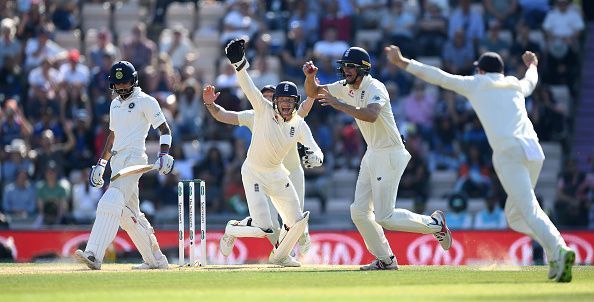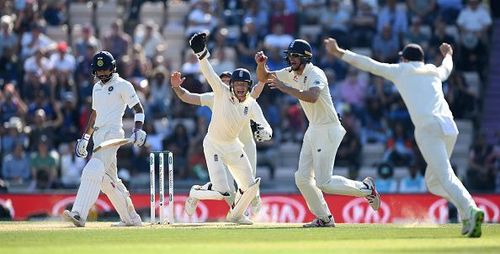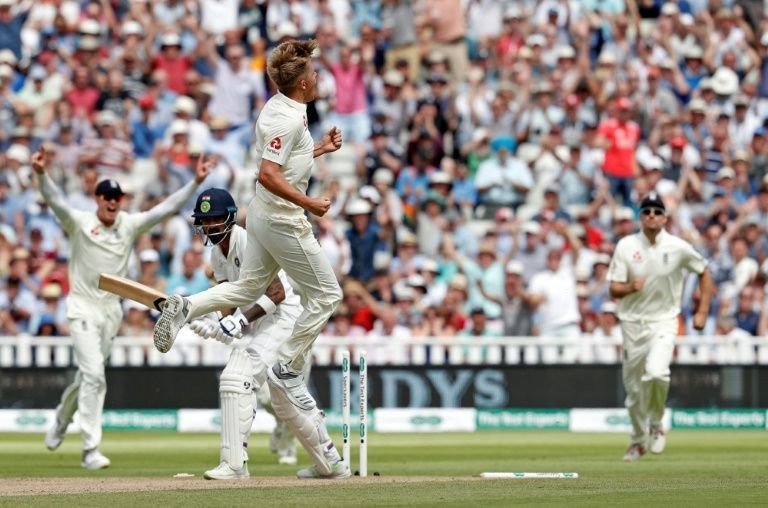
Practice matches before overseas Test series- A necessity for Team India

They say failing to prepare is preparing to fail. This is the path that the Indian team had chosen for the South African series earlier and have followed the same path for the current England tour.
In both South Africa and England, there is swing and seam movement. As important as it is for the bowlers to hit the right length, it is equally important for the batsman to adjust to these conditions.
The Indians are used to playing the cross-batted shots and the big booming cover drive. In England and South Africa, the conditions are too much in favour of bowlers to play these expansive shots. India did not play any tour game in South Africa and they couldn’t get acclimatized to the conditions. Yet, they were able to win the final Test match but lost the series 2-1.
This shows that the team under Kohli needs time to adjust to the new conditions and they can surely deliver the results. Come the tour of England, and only 2 players played county cricket at the expense of the IPL. The players were Cheteshwar Pujara and Ishant Sharma.
The former struggled a bit at the start of the series but did come up with a knock of 132 in the Southampton Test. He has lacked consistency but is at least familiar with the conditions. The county stint probably did a world of good to Ishant Sharma who started pitching the ball fuller and hitting the right length. He has done no harm to his reputation of being a dangerous bowler.

The English Duke ball has a pronounced seam. Typically, the ball would swing around for 25-30 overs and more in a few cases till the seam is worn out. The Indian batsman have just not been able to adapt to this.
There is no doubt that the English seam bowling was very good, yet Indian batsmen could even put up a stiff resistance. They were like cycles on a stand, one falls and they all fall. The resilience was not to be seen.
However, India managed to push England really close in 2 of the 4 matches. They were also able to convincingly win a Test match. This happened when all the departments were up to the task. The openers gave a decent stand, the middle order put up a good show, the bowlers hit the right lengths. Again, this shows that the team is very capable of adapting to the conditions provided they are given enough time.
The only solution to this is to play practice matches. Playing the ODI and T-20 series prior to the Test matches maybe a benefit, but is still not as effective as playing 2-3 four-day games. Virat Kohli is an exception. He can adapt to any condition.
There would have been a lot of pressure on him coming into this series, especially on the back of his failures in 2014. When one looks at the highest run scorers this series, Virat Kohli tops it and that too he is miles ahead of the rest.
The other batsmen have shown glimpses of good form but needed more time. Consider the case of Shikhar Dhawan, he played the first match in South Africa, then was dropped due to poor performance. The exact same thing happened with him in England.
Continuously changing a team, can unsettle it and can do more harm than good. For sure, if Dhawan was exposed to more games in seaming conditions, earlier on, he would have been able to come out with more significant scores.
It took Rahane 2 Test matches to find his form, and in most cases, by this time in most cases, a series is decided. There can always be a debate about what could have been as against what is. The current 3-1 scoreline in favour of England could have very well read 2-2 or for that matter 3-1 in favour of India.
The tour of South Africa and England has shown that India definitely needs to play practice games before the Test series, in order to get used to the conditions.
The next tour for India would be Down Under. The Aussie pitches are known to have a lot of pace and bounce. Even though the pitches at Brisbane and WACA are not what they used to be, they still would be quite a handful to deal with, especially considering the Aussie trio pace attack of Starc, Cummins, and Hazlewood.
There would not be as much lateral movement as there was in England, so it would be relatively easier for the Indian batsmen. Having said that, there should be no complacency, and practice matches should be scheduled, else there would be another debate about what is and what could have been.